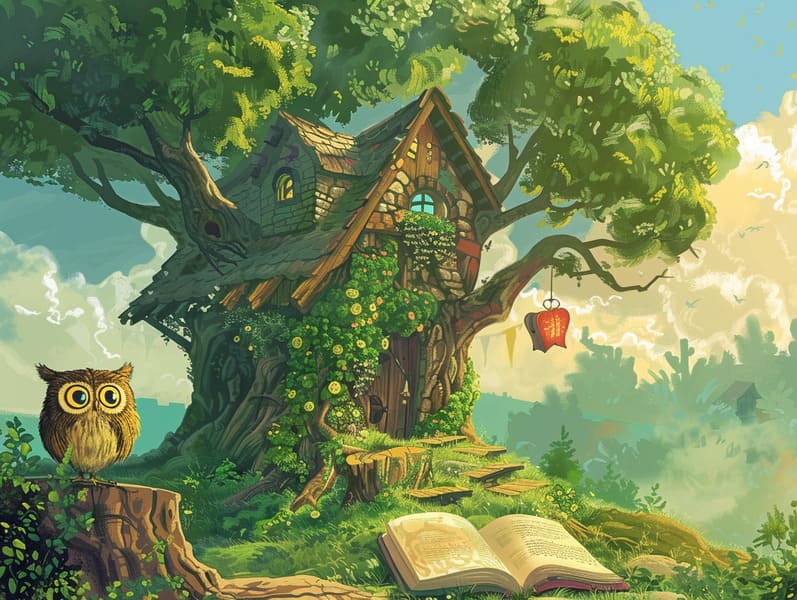Delving into the Background of Popular Fairy Tales with Their Everlasting Grace.
Delving into the Background of Popular Fairy Tales with Their Everlasting Grace.
Blog Article

Timeless fairy tales have timeless appeal. These tales have been told from one generation to the next millennia before they were ever transcribed. They developed from a variety of civilizations, including Middle Eastern traditions. They were initially shared among elders, often carrying themes and messages aligned with the societal norms and beliefs of the time.
The renowned Brothers Grimm, Jacob and Wilhelm Grimm, were among the first to collect and release many of these beloved tales. Their compilation, "Grimm's Story Collection," included stories like "Ashenputtel," "Hansel and Grethel," and "Snow-White and Rose-Red," which have since become mainstays in the world of traditional fairy tales. Similarly, Hans Andersen's fantastical fairy tales, such as "The Story of the Little Mermaid," and "The Duckling that Could," have won hearts worldwide, guaranteeing their place in the pantheon of iconic fairy tales.
Despite their historical roots, traditional fairy tales remain as applicable as ever, especially as nighttime stories for kids. These whimsical stories are now available in different formats, including richly illustrated books, whimsical animations, and online storybooks.
Their continued relevance can be attributed to several fascinating points:
Significant Morals: Old fairy tales often impart important moral lessons. Fairy tales like "The Shepherd Boy and the Wolf" teach the benefit of integrity, while "The Tortoise and the Hare" highlight the values of steadfastness and humility. These tales offer kids clear distinctions between ethical and unethical, forming their moral compass in a tender yet profound way.
Empathy and Understanding: Classic fairy tales frequently involve heroines facing obstacles and hardships, encouraging young listeners to resonate with their struggles and root for their triumphs. For instance, "Beauty's Beast" teaches us the virtue of looking deeper to acknowledge the true essence of a person, fostering insight and awareness.
Cultural Understanding: Many timeless fairy tales are rooted in the cultural contexts from which they arose. Understanding these stories can provide intriguing perspectives into different historical contexts, encouraging a sense of global respect and understanding.
Fantasy and Imagination: The imaginative elements in fairy tales—enchanted objects—unleash children’s fantasies. These fairy tales carry readers to otherworldly realms, engendering creative dreams and a sense of amazement that continues a lifetime.
Timeless fairy tales are not only bewitching but also didactic. They serve as fantastical tools in nurturing various intellectual and emotional capacities in kids. When classic fairy tales are spoken out loud, they develop language development by presenting new phrases and intricate sentence structures. This practice also advances listening skills and concentration, as little ones keep up with the story, enthusiastic to see what happens next.
Furthermore, contemplating the themes and characters of classic fairy tales can promote problem-solving abilities and problem-solving abilities. The young are instructed to notice patterns, expect results, and grasp cause and effect. These explorations also encourage kids convey their thoughts and feelings, cultivating their emotional intelligence.
In today’s electronic age, the prevalence of web-based fairy tales has made these stories more within reach than ever. Internet sites and digital apps make available broad selections of classic fairy tales that can be browsed or listened via anytime, anywhere. Fairy tales read out loud are particularly prevalent, giving an engaging way for children to be a part of these find it here magical stories. Narrated books and read-aloud videos guide characters and settings to life, often joined by magical background sounds and harmonies that enhance the tale journey.
The timeless fascination of classic fairy tales lies in their ability to change to present eras while holding onto their essential themes. Contemporary reinterpretations of these fairy tales often showcase more varied protagonists and modern settings, making them accessible to today’s audience. However, the essential messages of fearlessness, warmth, and truth remain unchanged, continuing to reach young readers of all ages.
Old fairy tales also offer a sense of contentment and recognition. They bring a structured narrative with a evident beginning, middle, and end, often concluding with the culmination of conflicts and the triumph of morality over wickedness. This assuredness can be placating for young ones, rendering a sense of steadfastness in an dynamic world.
Classic fairy tales continue to captivate and guide new generations, maintaining their fascination and value in modern society. As kids' bedtime tales, they put forth a perfect blend of captivation and insight, developing moral values, empathy, and creativity. The presence of online storybooks and the well-received status of fairy tales spoken assure that these old fairy tales remain available to new generations.
By retaining and disseminating these fairy tales, we continue to admire the rich tapestry of folklore and cultural heritage. Whether you are delving into a gorgeously illustrated book, viewing a web-based collection, or playing an audio story, the mystique of old fairy tales is always within reach. These stories reveal of the unchanging effect of stories and its ability to unite us across generations and cultures.
Whether you are delving into a colorful picture book, perusing a virtual library, or listening on an narrated book, the loveliness of ancient fairy tales is always within reach.
These stories emphasize of the immortal impact of fairy tales and its ability to unify us across epochs and places, making a tie that captivates and teaches alike.